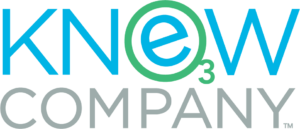Please see below for answers to common questions. Some of our technologies and operations are proprietary and confidential. If you would like specific information on our technology, customers or finances, please contact us, and we will direct you to the appropriate representative for assistance. You may be required to sign a non-disclosure agreement before information can be provided.
General
What is KNeW?
KNeW Process® is a zero-discharge industrial process which transforms Acid Mine Drainage (AMD) and brackish groundwater into fertilizers, plant nutrients, clean water, and other products that have a commercial value. The KNeW technology uses ion exchange and a chemical process to transform the harmful ions found in brackish water into valuable fertilizers and products.
How does the KNeW Process work?
In the simplest terms, water with the right mineral composition is neutralized and filtered to remove coarse particles and precipitated heavy metals, then pumped through an ion exchange battery to remove all the dissolved ions leaving fresh, clean water that can be used for drinking and agriculture. The second phase of the process generates agricultural fertilizers, plant nutrients and other commercial products.
Where can a KNeW Process plant be built?
KNeW plants can be built and operated anywhere there is a large brackish water aquifer or acid mine drainage. Typically, brackish aquifers are found in arid regions, such as the Middle East and the desert Southwest of the United States.
Water Questions
Who are KNeW's water customers?
Municipalities are ideal KNeW customers because they usually have existing infrastructure in place to deliver water to the end user. But the KNeW process has applications for remote non-arable regions as well, where little infrastructure exists.
How much water can a KNeW plant treat?
KNeW Process plants can be designed and built to scale as communities grow. Depending on the size of the aquifer and well(s), KNeW can produce millions of gallons of water per day.
How is the water stored and distributed after the process is complete?
Depending on the unique circumstances of each customer, the purified water may be pumped directly into municipal water systems or stored in holding tanks. Water may be transported by truck or rail for distribution to other areas as well.
Fertilizer Questions
How is fertilizer generated and used by the KNeW Process?
Fertilizers and other products are generated during the KNeW water purification process. During the first stage of the process, sodium chloride, gypsum, and ammonium sulfate are produced. During the second stage, dolomite, more sodium chloride and potassium nitrate are produced.
These products are stored in bulk in nearby dry warehouses to be sold and transported later
How much fertilizer can a KNeW plant produce?
Because fertilizers and other products, are the result of solids removed from brackish water, the amount of those products depends on the mineral concentration of the water and the volume of brackish water processed. In mineral rich aquifer regions, KNeW Company has considered applications producing several tons of fertilizer per day.
Who are KNeW's fertilizer customers?
Potassium nitrate and ammonium sulfate are used in many agricultural fertilizers with potassium nitrate being especially beneficial to hydroponic agriculture. Potential buyers of these products include fertilizer manufacturers, companies that buy and sell raw supplies, agricultural authorities and farmers. KNeW Company assumes total responsibility for fertilizer and other commercial product marketing.
How is the fertilizer stored and distributed after the process is complete?
KNeW Process fertilizers and other products are solids that are appropriately dried for packaging and distribution. The KNeW Company manages the production, storage, packaging, marketing and distribution of all fertilizers and products.
Products, such as potassium nitrate and ammonium sulfate may be packaged or stored in bulk in separate dry warehouse facilities. These raw fertilizer products are then delivered by truck and/or rail to the customer's processing plant.
Ownership / Financial Questions
Who owns KNeW?
The KNeW Company, LLC, a California LLC, is owned by Trailblazer Technologies Ltd. and Glenjohn Capital, LLC, a California LLC. Glenjohn Capital, LLC is managed by its founder Glenn Howard, Aubrey Howard and Hugh James.
What is the current patent status of the KNeW Process and in what countries is it active?
The KNeW Process was granted a US patent on September 8, 2015. The KNeW Company is licensed to conduct operations using the patent by GlenJohn Capital.
The KNeW Process patent extends internationally. For a complete list of countries where the KNeW patent is enforced, please contact us.
How much does it cost to build and operate a KNeW plant?
Many variables such as location, depth of the aquifer, mineral concentration and energy requirements, will affect construction and operation costs.
If you are looking for investment opportunities and would like pro-forma information, please contact us, and one of our executives will respond.
Operations Questions
Where are plants using the KNeW Process currently operating?
Trailblazer Technologies Ltd., the owner of the KNeW technology, operates a proof of concept plant in Johannesburg, South Africa where clean water and potassium nitrate can be produced daily.
What percent of KNeW Company's products are water and what percent are solid products?
This varies according to the dissolved solids content of the brackish water, as noted above. As the KNeW Company grows and expands its operations, the ratio of water to solid products will change. Comparing physical products, however, may not be an accurate gauge since more water by volume is treated than solid products are generated. The value of the products will depend on external market forces.
If you have questions about the mineral content of water in your area, we can provide an analysis. Contact us to arrange for a sample to be tested.


